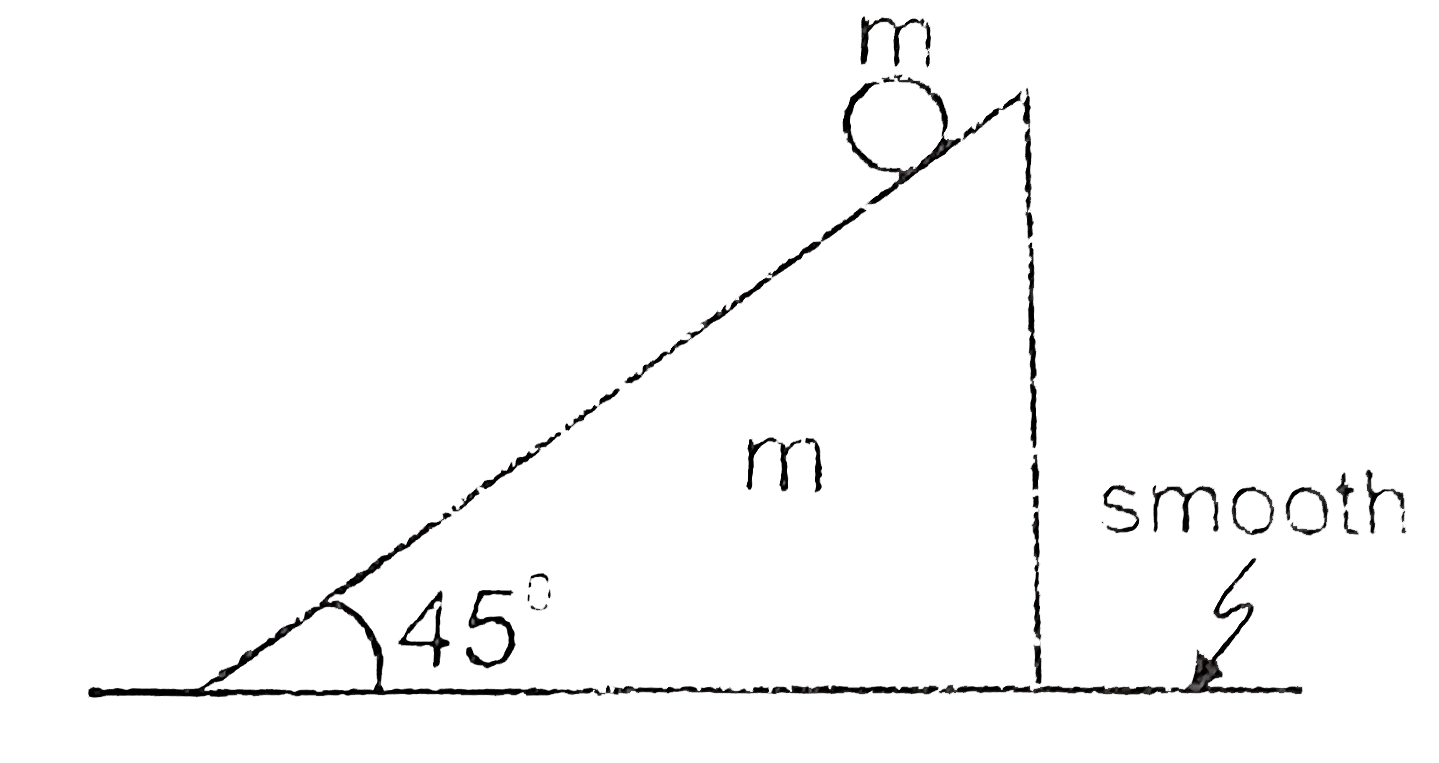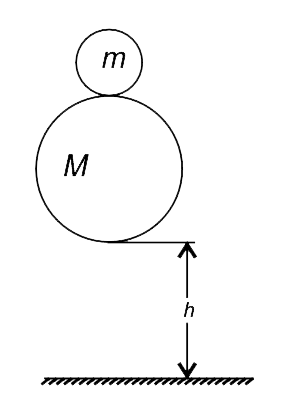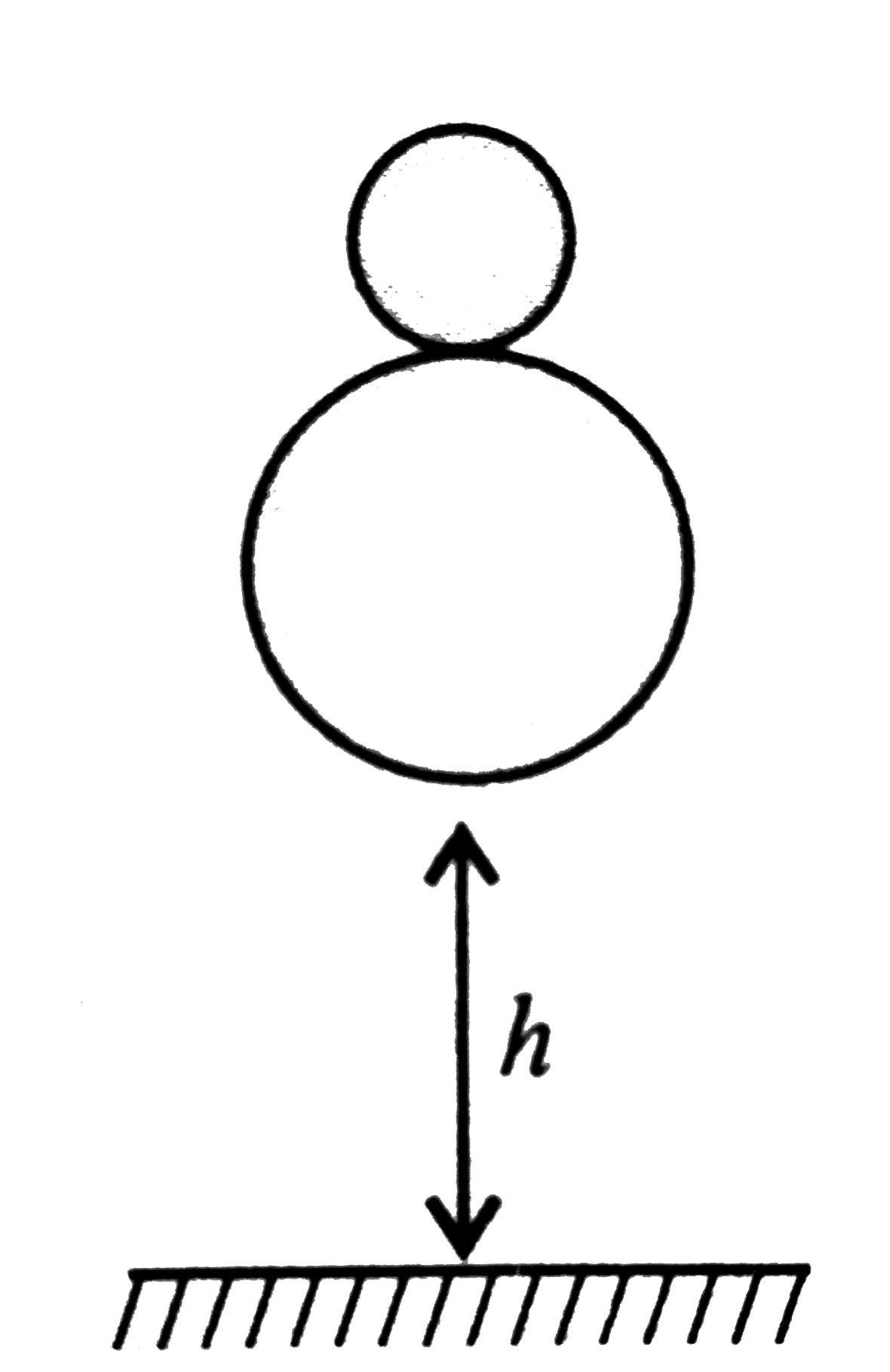A small ball of mass m is placed on top of a "super ball" of mass M, and the two balls are dropped to the floor from height h. How high does the small ball rise after the collision ? Assume that the collisions with the superball are elastic, and that m <<M.

The correct Answer is:9h
Topper's Solved these Questions
- COLLISIONS BOOK - AAKASH SERIESCHAPTER - COLLISIONS EXERCISE - QUESTIONS FOR DESCRIPTIVE ANSWERS
4 Videos
- COLLISIONS BOOK - AAKASH SERIESCHAPTER - COLLISIONS EXERCISE - NUMERICAL EXERCISE ( LEVEL 1)
18 Videos
- CENTRE OF MASSBOOK - AAKASH SERIESCHAPTER - CENTRE OF MASSEXERCISE - ADDITIONAL PRACTICE EXERCISE (PRACTICE SHEET (ADVANCED))
3 Videos
- ELASTICITYBOOK - AAKASH SERIESCHAPTER - ELASTICITYEXERCISE - Questions for Descriptive Answers
10 Videos
Similar Questions
A ball of mass 'm is released from the top of a smooth movable wedge of mass 'm'. When the ball collides with the floor, velocity is 'v'. Then the maximum height attained by the ball after an elastic collision with the floor is : (Nelect any edge at the lower end of the wedge)

View SolutionTwo elastic balls of masses M and m (M>>m) are placed on top of each other with a small gap between them. The balls are dropped on to the ground with the bottom of the lower ball at height h above the ground. The lower ball has a radius R and the upper ball has negligible dimension.

(a) Up to what height the ball of mass m will bounce above the ground ?
(b) Does the result obtained above violates the low of conservation of mechanical energy?
View Solution
Knowledge Check
A ball is dropped from a height of 20m on a floor for which e=1/2. The height attained by the ball after the second collision
A1.25mB2.5mC5mD10mA ball of mass 'm is released from the top of a smooth movable wedge of mass 'm'. When the ball collides with the floor, velocity is 'v'. Then the maximum height attained by the ball after an elastic collision with the floor is : (Nelect any edge at the lower end of the wedge)
 A2v2gBv24gC4v2gDv22g
A2v2gBv24gC4v2gDv22gA clay ball of mass m and speed v strikes another metal ball. of same mass m, which is at rest. They stick together after collision. The kinetic energy of the system after collision is –
Amv2/2Bmv2/4C2mv2Dmv2
A tennis ball with (small) mass m2 rests on the top of a basketball of mass m1which is at a height h above the ground, and the bottom of the tennis ball is at height h+d above the ground. The balls are dropped. To what height does the tennis ball bounce with respect to ground? (Assume all collisions to be elastic and m1>>m2)

View SolutionA tennis ball with (small) mass m2 rests on the top of a basketball of mass m1which is at a height h above the ground, and the bottom of the tennis ball is at height h+d above the ground. The balls are dropped. To what height does the tennis ball bounce with respect to ground? (Assume all collisions to be elastic and m1>>m2)

View SolutionA ball is dropped from a height of 20 m in the floor and rebounds to 1.25 m after second collision, then coefficient of restitution e is
View SolutionA ball is dropped from a height of 20 m in the floor and rebounds to 1.25 m after second collision, then coefficient of restitution e is
View SolutionA ball is dropped from a height of 20 m in the floor and rebounds to 1.25 m after second collision, then coefficient of restitution e is
View Solution
